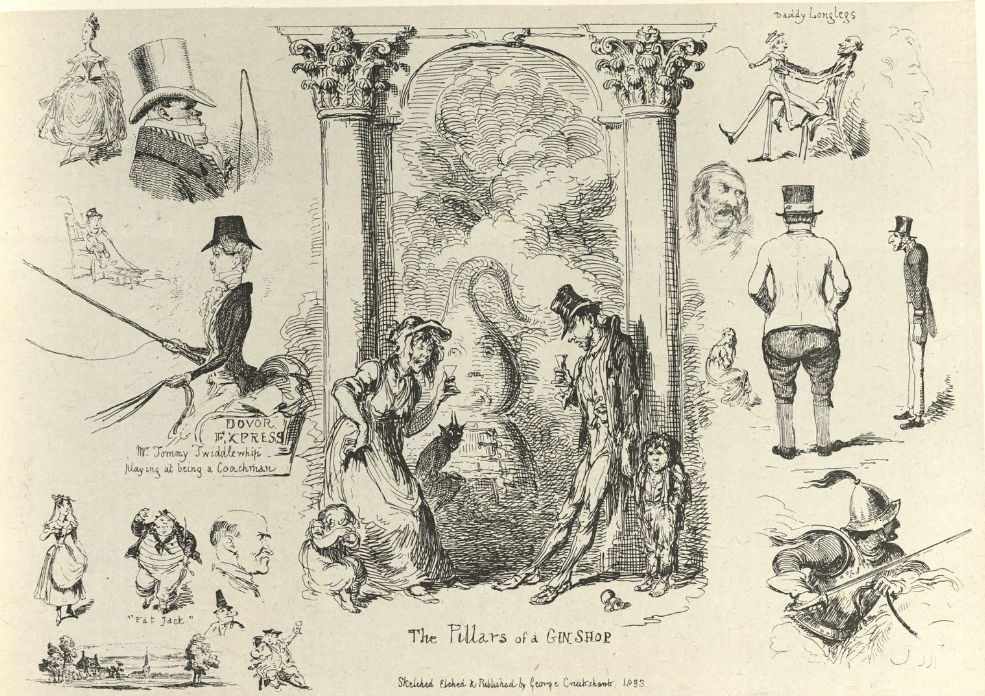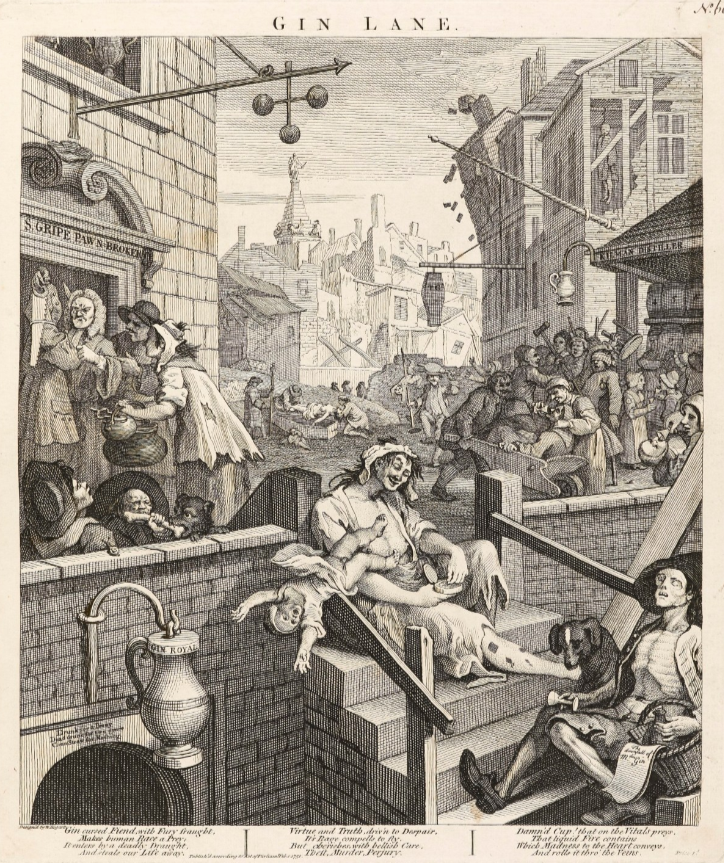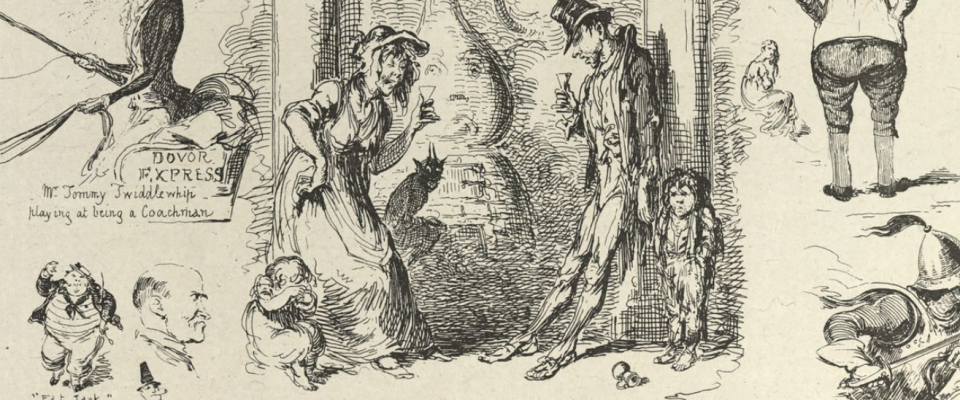By Kameron Harrison

George Cruikshank’s 1833 sketch and etching titled, “Pillars of a Ginshop” features the artist’s gruesome account of alcohol’s effect on 19th-century British families. The sketch depicts a family of four–mother, father, son, and daughter–slouched beneath the pillars of a great archway, beyond which lurk ominous and curiously devilish figures partly veiled by smoke.
Cruikshank’s sketch emphasizes the family’s descent into disarray standing beneath the ginshop’s pillars. The figures of the mother and father are entranced by the cups of gin in their grasp. Their faces are twisted into a slight madness or agitation that leaves them stagnant, nonfunctional. The crazed dependence of the mother and father demonstrate the artist’s interpretation of the behavioral and physical effects of consuming gin.
“Pillars of a Ginshop,” is one of many George Cruikshank illustrations inspired by the temperance movement, a cause he supported following a lifetime of heavy drinking. After shifting his focus towards temperance, George Cruikshank considers the consequences of submitting to the temptations of alcohol. Beneath the prominent figures of the drunk mother and father stand what could be considered the most disturbing effect of the family’s alcoholic indulgence.
At the side of the mother crouches the daughter, who shields her face with her hands, conveying sadness and distress. At the side of the father stands the son, shoeless, hands in pockets, sketched with an expression of fear and helplessness. George Cruikshank imagines alcohol as an evil which destroys not only individual lives but all lives within the family unit.
Aside from the wretched family directly beneath the ginshop’s pillars, what lurks beyond the archway offers an interesting depiction of alcohol’s production, or the business of selling alcohol to the public. If we imagine that “The Pillars of a Ginshop” exposes the foundation of alcohol production in 19th-century Britain, the sketch suggests that such a business is built upon the destruction of a dependent and wayward public.
However, the figures beyond the archway indicate the family’s helplessness to resist such temptation. Beyond the archway of the ginshop’s pillars, George Cruikshank illuminates the figures of production that make alcohol accessible–figures that operate behind the smoke and shadows of an industrialized city.
Behind the drunken mother is sketched a dark figure kneeling in front of a large gin barrel which, interestingly, has a face of its own. The dark figure looks over its shoulder past the smoke and shadows towards the family, while its body remains oriented towards the personified barrel. The features of the dark figure include a long and narrow face, pointy ears, two horns which protrude from the forehead, large black eyes, and a sharp smile.
“Pillars of a Ginshop” is a sketched representation of lower-class Britain’s depravity resulting from their addiction to a product made by the devil himself. Cruikshank constructs a destructive image of Britain reminiscent of Williams Hogarth’s depiction of poor gin-addict families in his famous 1751 work titled, “Gin Lane.”

George Cruikshank embodies a Hogarthian vision of suffering, decay, and evil influence in “Pillars of a Ginshop,” while simultaneously inventing additional creative insight into the forces of production responsible for destroying susceptible citizens.
Such a devilish portrait of gin’s production displays the strength of the substance’s influence over the people of Britain while, interestingly, absolving alcoholic British families from blame. George Cruikshank plays into many of the same artistic themes found within Hogarth’s “Gin Lane,” but succeeds at expanding more direct objectives of temperance art by peering behind the veil of production that encourages the mass consumption of gin.


 Albin O. Kuhn Library & Gallery
Albin O. Kuhn Library & Gallery